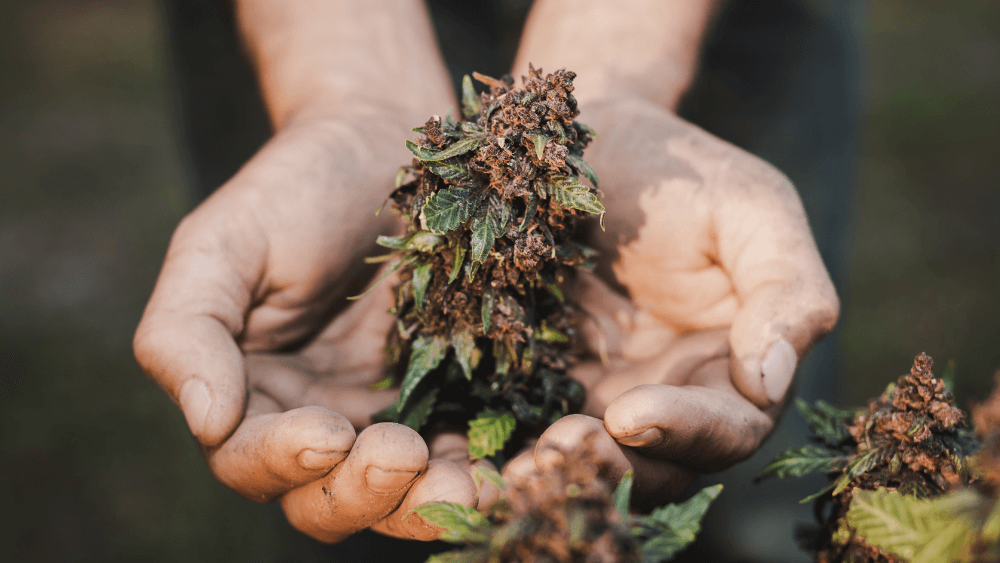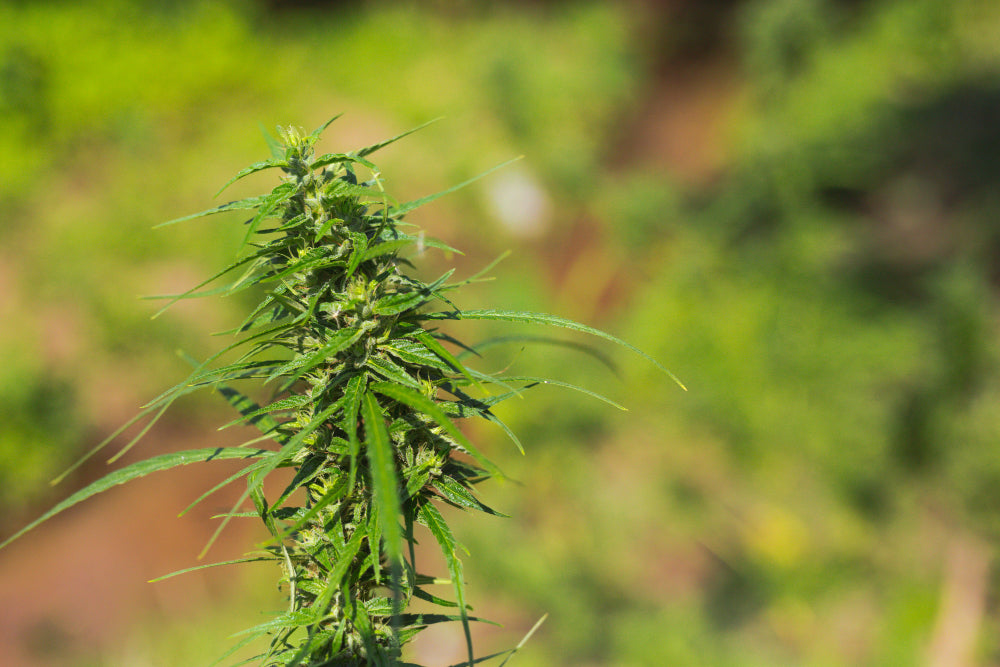CBG9: The insider tip in the cannabis universe

In the endless sea of cannabinoids, of which THC and CBD are making the most famous waves, a new, promising player is emerging: CBG9. Less well-known but no less fascinating, CBG9 stands for cannabigerol, a cannabinoid that is slowly stealing the spotlight. But what makes CBG9 so special? And why should you keep an eye on it? Let's delve into the world of CBG9 together and reveal its secrets.
What is CBG9?
CBG9 is a phytocannabinoid found in the cannabis plant. It is what is called a chemical precursor - the base from which other cannabinoids such as THC and CBD develop. This fact alone makes CBG9 an exceptional member of the cannabis family. Although it is present in higher concentrations in young cannabis plants, only small amounts of it are found in the mature plants because it is converted into other cannabinoids during the growth process.
Why CBG9 deserves our attention
Research on CBG9 is still in its infancy, but the results so far are promising. Research suggests that CBG9 offers a number of potential health benefits. From neuroprotective effects that could help treat diseases such as Parkinson's and multiple sclerosis, to its antibacterial properties against resistant strains of bacteria, to its possible role in fighting certain types of cancer, CBG9 shows that it is more than just a supporting player is the cannabinoid cast.
Additionally, CBG9 may play an important role in stimulating appetite, especially for people who suffer from loss of appetite due to illnesses such as cancer. These properties make CBG9 a cannabinoid of great interest not only to patients and consumers, but also to researchers and the medical community.
CBG9 and CBD: What's the difference?
In the whirlwind of cannabis research and use, CBD and CBG are two cannabinoids that are attracting more and more attention. Both substances offer a wide range of potential health benefits without the psychoactive effects of their famous cousin THC. But what differentiates CBG9 from CBD, and why is this difference important?
Both cannabinoids interact with the body in complex ways by affecting the endocannabinoid system (ECS), which plays a key role in regulating sleep, mood, appetite and pain. While CBD is known for its calming, anti-inflammatory and anti-anxiety properties, CBG9 is beginning to emerge as a cannabinoid with its own unique potential. CBG9 is present in smaller amounts in the cannabis plant, making it a rarer and often more expensive product. Research on CBG9 is less extensive than that on CBD, but studies to date suggest that it has powerful antibacterial properties, may be neuroprotective, and may even inhibit the growth of certain cancer cells.
Another important difference between CBG9 and CBD lies in their chemical structure and the way they work in the body. While CBD affects a wide range of receptors in the body, CBG9 has the ability to bind to specific receptors that are directly linked to certain health conditions. For example, CBG9 has an affinity for the CB1 and CB2 receptors in the brain and immune system, making it a potentially effective remedy for pain and inflammation.
The differences in availability, cost, and specific health benefits make CBG9 an intriguing addition alongside CBD. For consumers and patients, this means greater choice and the ability to find a cannabinoid product tailored to their needs. While CBD already has a strong foothold in the world of wellness and alternative medicine, CBG9 may soon follow as research continues to uncover its unique benefits and uses.
Overall, the differences and similarities between CBG9 and CBD open exciting new perspectives for the use of cannabinoids to promote health and well-being. As research and development advances, CBG9-based therapies could play an important role in the treatment of a variety of conditions, from chronic pain and inflammation to neurodegenerative diseases and beyond. The future of cannabinoids in medicine is bright, and CBG9 is undoubtedly a rising star on the horizon.
How to take CBG9?
The way people can use CBG9 varies greatly, offering a wide range of options to suit individual needs and preferences. From oils and tinctures to pills and topicals, CBG9's flexibility makes it a versatile candidate for integration into everyday life.
CBG9 oil is perhaps the most well-known form and is often used sublingually, i.e. under the tongue. This method allows for rapid absorption into the blood and ensures an efficient effect. Many appreciate the simplicity of dosage and the immediacy of the effects associated with this form of application. In addition, CBG9 oils offer the possibility of mixing them into food and drinks, providing a discreet and pleasant way of consumption.
In addition to oils, CBG9 is also available in crystalline form, which is available as a powder. This can be placed directly under the tongue or mixed into foods and drinks, offering another flexible application option. The crystals dissolve easily, providing another option for those looking for a quick and effective way to consume CBG9.
For those who prefer precise dosage, CBG9 pills and capsules are an excellent choice. This form of administration eliminates uncertainty regarding dosage and makes it easy to incorporate CBG9 into your daily routine. Pills and capsules are especially convenient for those on the go or looking for a discreet way to manage their cannabinoid intake.
Topical applications of CBG9, such as creams and ointments, are aimed at people who want to specifically treat skin problems or local pain. This form allows CBG9 to be applied directly to affected areas, providing targeted relief without distributing the cannabinoid systemically, i.e. throughout the body.
Overall, CBG9 's variety of application methods provides users with a wealth of options to benefit from its potential health benefits. Whether as an oil, powder, pill or cream, CBG9's flexibility and accessibility make it a valuable ingredient in the world of cannabinoids.
Possible side effects of CBG9
The use of CBG9, like any other cannabinoid, can come with some side effects. Although CBG9 is known for its potential health benefits, it is important to also be aware of possible side effects. Most people tolerate CBG9 well, and side effects are usually mild and temporary. But as with all substances, the reaction can vary from person to person.
-
Dry mouth : One of the most common side effects, also known as “cottonmouth,” occurs because cannabinoids can affect saliva production. This can lead to a feeling of dryness in the mouth, although this can easily be remedied with increased fluid intake.
-
Fatigue : Some users report feeling tired or sleepy after taking CBG9. This could be due to the relaxing properties of CBG9, which may be more pronounced, especially at higher dosages.
-
Increased appetite : CBG9, similar to other cannabinoids, may increase appetite. For those experiencing loss of appetite, this may be a desirable effect. However, for others it might be undesirable, especially if they need to watch their calorie intake.
-
Mild stomach discomfort : In rare cases, taking CBG9 may cause mild stomach discomfort, such as malaise or gastrointestinal upset. This side effect is usually temporary and can be minimized by adjusting the dosage.
It is important to note that research on CBG9 and its side effects is still in its early stages. Most information about side effects comes from anecdotal reports or studies of related cannabinoids. As with any new supplement or medication, it is advisable to speak with a doctor before starting to take CBG9 , especially if you already have certain health conditions or are taking other medications.
Conclusion: CBG9 and its place in the future of cannabinoids
CBG9, an emerging cannabinoid derived from the cannabis plant, has caused a stir in the scientific community and among cannabis enthusiasts alike. With its potential to provide a variety of health benefits - from neuroprotective properties to fighting bacteria and possibly helping in the fight against cancer - CBG9 is on the cusp of a promising future in medical research and application.
The differences and similarities to CBD have shown that CBG9 has a unique profile that makes it particularly interesting for specific applications. The variety of application methods, from oils to crystals to topical forms, allows users to use CBG9 in a way that best suits their needs. The potential side effects of CBG9 are generally mild and should not deter potential users from exploring the benefits this cannabinoid can provide.
It is important to follow ongoing research on CBG9 as new discoveries and developments will further deepen the understanding and applications of this cannabinoid. With increasing interest and investment in cannabinoid research, CBG9 may be at the beginning of a revolution in the treatment and management of a range of health challenges.
The cannabis plant has already given us a wealth of valuable cannabinoids, and CBG9 is just one example of how much remains undiscovered. The future looks bright, and CBG9 could play a key role in opening new doors to health benefits that previously seemed out of reach. It remains exciting to see how CBG9 and other cannabinoids continue to push the boundaries of what can be achieved with natural compounds





